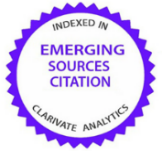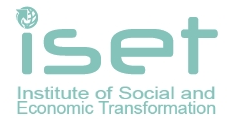Risk Assessment of Water Transport Enterprises by Modeling Direct and Indirect Threats
Abstract
Introduction. The methods of traffic modeling by water transport and assessing the risks associated with it is needed to identify the issues of the past period, proposing methods for assessing not only direct but also indirect risks to form the preconditions for preventing them in the postwar reconstruction. The coordination of different transport type’s actions of transport requires an assessment of risks impact of the previous stages of mixed transportation on the formation of the following risks’ stages. Existing methods of assessing such impact need to be improved.
Aim and tasks. The aim of this study is creation of methodological approach to risk management in water transport based on a mathematical model for assessing the impact of both direct and indirect risks. The tasks are: to prove that the additive approach of taking risks into account leads to the systematic deviation appearance from the result; take into account the impact on the risk of cargo transportation.
Results. It has proved that the calculation of risk as an additive function leads to a systematic deviation from the relevant result. It stated that the risk of each of the next stages of transportation depends on the risks of the previous stages. To increase risk analysis relevance in water transport, the use of an oriented graph in a multidimensional parameter space proposed. It stated that in order to calculate the integrated risk, it is essential building not only the risk matrix but also the risk incidence matrix to take into account their relation to business entities. It established the impact of even minor risks could take the form of a catastrophe, which leads to cargo flows reorientation. It established that: for calculation of integral risk, it is crucial consider direct and indirect influences of risks; risk calculation for water transport also requires risk analysis in related modes of transport.
Conclusions. It was established that, when calculating integral risk, it is necessary to consider direct and indirect influences on risks and that the risk calculation for water transport also requires risk analysis in related modes of transport. The proposed approach significantly increases the relevance of water transport risk analysis and allows for managing changes in transportation routes in real time.
Keywords:
risk management, water transport, mathematical model, indirect risksReferences
Chang, C., Xu, J., Dong, J., &Yang, Z. (2019). Selection of effective risk mitigation strategies in container shipping operations. Maritime Business Review, 4(4), 413-431. https://doi.org/10.1108/MABR-04-2019-0013
Chernova, O., Vernyhora, R., Okorokov, A., & Kiman, A. (2021). Analysis of technical and technological parameters of Ukrainian pre-port railway stations. Transport systems and transportation technologies, 22, 36-47. https://doi.org/10.15802/tstt2021/247882
Gryshchenko, V., & Gryshchenko, I. (2021). The impact of changes in the volume of freight and passenger transportation by water on the GDP of Ukraine. E3S Web Conference, 255, 01036. https://doi.org/10.1051/e3sconf/202125501036
Koskina, Yu. O. (2019). Set-theory Approach to Modelling of the Structure of Cargoes Delivery Systems, Bulletin of Vinnytsia Polytechnic Institute, 5, 62-74. https://doi.org/10.31649/1997-9266-2019-146-5-62-74
Kotenko, S., Kasianova, V., & Kolosok, V. (2021). Determination of influence of competitiveness factors on freight transportation by water transport. Economic innovation, 23, 3(80), 175–183. https://doi.org/10.31520/ei.2021.23.3(80).175-183
Maiyar, L.M., & Thakkar, J.J. (2019). Robust optimisation of sustainable food grain transportation with uncertain supply and intentional disruptions. International Journal of Production Research, 58(18), 5651-5675. https://doi.org/10.1080/00207543.2019.1656836
Mogale, D.G. Cheikhrouhou, N., & Tiwari, M.K. (2019). Modelling of sustainable food grain supply chain distribution system: a bi-objective approach. International Journal of Production Research, 58(18), 5521-5544. https://doi.org/10.1080/00207543.2019.1669840
Nguyen, S. (2020). A risk assessment model with systematical uncertainty treatment for container shipping operations. Maritime Policy & Management, 47 (6), 778-796. https://doi.org/10.1080/03088839.2020.1729432
Nguyen, S., & Wang, H. Y. (2018). Prioritizing operational risks in container shipping systems by using cognitive assessment technique. Maritime Business Review, 3(2), 185-206. https://doi.org/10.1108/MABR-11-2017-0029
Okorokov, A. M., Vernyhora, R. V., & Kuzmenko, А. I. (2020). Study of interaction of automotive and river transport at the port terminal by the method of simulation. Transport systems and transportation technologies, 20, 51-59. https://doi.org/10.15802/tstt2020/217402
Prachi, A., & Talari, G. (2018). Multi-choice stochastic transportation problem involving logistic distribution. Advances and Applications in Mathematical Sciences. 18(1), 45-58.
Rawson, A., Brito, M., Sabeur, Z., & Tran-Thanh, L. (2021). From Conventional to Machine Learning Methods for Maritime Risk Assessment. Trans Nav. International Journal on Marine Navigation and Safety of Sea Transportation, 15(4), 757-764. https://doi.org/10.12716/1001.15.04.06
Shramenko, N., & Shramenko, V. (2018). Mathematical model of the logistics chain for the delivery of bulk cargo by rail transport. Visnyk Natsionalnoho Hirnychoho Universytetu, 5, 136-141. https://doi.org/10.29202/nvngu/2018-5/15
Sun, Y., Liang, X., Li, X., & Zhang, C. (2019). A Fuzzy Programming Method for Modeling Demand Uncertainty in the Capacitated Road–Rail Multimodal Routing Problem with Time Windows. Journals Symmetry, 11(1), 91. https://doi.org/10.3390/sym11010091
Turpak, S.M., Vasylieva, L.O., Kharchenko, T.V., Veremeyenko, L.A., & Hryshko, V.V. (2020). Increasing the interaction efficiency of railway and water transport by determining rational sizes of motion, 31(70), 2, 175-181. https://doi.org/10.32838/2663-5941/2020.2-2/30
Wolfinger, D., Tricoire, F., & Doerner, K. F. (2019). A matheuristic for a multimodal long haul routing problem. EURO Journal on Transportation and Logistics, 8(4), 397-433. https://doi.org/10.1007/s13676-018-0131-1
Wu, D., Wang, N., Yu, A., & Wu, N. (2019). Vulnerability analysis of global container shipping liner network based on main channel disruption. Maritime Policy & Management, 46(4), 394-409. https://doi.org/10.1080/03088839.2019.1571643
Zhou, Y., Kum, X. L., & Yuen, F. (2022). Holistic risk assessment of container shipping service based on Bayesian Network Modelling. Reliability Engineering & System Safety, 220, 108305. https://doi.org/10.1016/j.ress.2021.108305
If the article is accepted for publication in the journal «Economics. Ecology. Socium» the author must sign an agreementon transfer of copyright. The agreement is sent to the postal (original) or e-mail address (scanned copy) of the journal editions.






















